#fork tailed flycatcher
Explore tagged Tumblr posts
Text

Fork-Tailed Flycatcher, an illustration for the @shikashikacollective project A Guide to the Birdsong of Migration (Kickstarter live now) featuring an album of music inspired by rare and vulnerable bird species. Each species is paired with a musician or music group. The Fork-Tailed Flycather will be paired with @lagartijeando : the musical project of Mati Zundel from Argentina, currently based in Mexico. He fuses traditional Latin American folk sounds with electronic beats, creating a unique blend that reflects his deep connection to indigenous cultures and modern electronic music.
384 notes
·
View notes
Text
Week 14 Observations
4.2.25

American Green Tree Frog
Hyla cinerea
Observed 4.2.25 at Galveston Island State Park. They thrive in warm, humid environments and their native range includes the Texas coast and Southeastern US.
They are nocturnal spending their days in trees (or squashed behind signs mounted on the fee booth 😅) and they come out at night to feed on bugs. They have teeth on the roof of their mouth to keep their food from escaping while they swallow.
They are not currently endangered, but with all species are affected by pollution and habitat loss
They can slightly change skin tones to blend in to their environments. Their calls are very distinctive and males emit low frequency calls to attract females. Females can lay about 400 eggs in a season, which is from March to October.
#americangreentreefrog #hylacinerea #citizenscience #treefrog #frog #amphibians #native #nature #outdoors #april #april2 #2025 #picoftheday #project365 #day92
4.3.25

Fork-tailed Flycatcher
Tyrannus savana
Observed on April 3, 2025 at Galveston Island State Park. It is a non-native vagrant in the US with its native range being southern Mexico to Argentina. It is rare for these birds to migrate to North America.
Their long, forked tales are longer than the scissor-tailed flycatcher’s with males tails growing to 6 inches. During migration they may be in a flock of 10,000 birds, being very social.
They feed by perching on limbs or fence posts and darting out to catch insects in the air. The length of their tails allow them to make sharp turns when going after pray. They can stop quickly and hover, despite reaching 65 mph all because of their tails.
They communicate by fluttering their tail feathers quickly, creating a high-pitched trill and the ones that do not migrate have a different frequency of trill than the birds that do migrate.
#forktailedflycatcher #tyrannussavana #citizenscience #nonnative #rarebird #lifebird #flycatcher #nature #outdoors #april #april3 #2025 #picoftheday #project365 #day93
4.4.25

American White Waterlily
Nymphaea odorata
Observed at Galveston island State Park 4.4.25. It is native in most of the United States, including Texas.
You can find this waterlily, thriving in shallow still waters such as ponds, lakes, and even some slow moving streams. The roots of this plant are anchored in the submerged soil.
They have very beautiful and fragrant flowers that can grow up to 5 inches wide with a number of petals and yellow stamens. This plant is attractive to butterflies but its biggest pollinators are actually beetles. The leaves are round and can grow up to 30 cm in diameter. They float on the surface and have a water repellent, wax-like coating to prevent tearing. These leaves have tiny openings on the surface called stomata and this is different to most land plants that have them on the underside. The leaves transport oxygen to the submerged roots via stems that are soft and act as air channels.
The flowers usually bloom summer to early fall (it sure feels like summer already) and each flower only lasts about four days.
Many animals use the waterlily for habitat and food and this includes but not limited to fish, amphibians, beavers, and insects.
The leaves, flowers and seeds of this plant are edible and the root, if boiled, can make a liquid used to treat sore throats.
#americanwhitewaterlily #nymphaeaodorata #citizenscience #waterlily #flora #native #nature #outdoors #april #april4 #2025 #picoftheday #project365 #day94
4.5.25

Longbract Wild Indigo
Baptisia bracteata
Observed on Galveston Island 4.5.25. This area is included in its native range of central and eastern North America. This plant thrives in fields, prairies, and open woods, preferring full sun. They are drought tolerant once they’ve become established.
It starts blooming in March making it the earliest bloomer of the genus Baptisia. Their flowers can be white to creamy yellow, are pea-shaped and they resemble lupines. The flowers are mostly pollinated by queen bumblebees though it will attract other insects.
They will develop inflated, green seed pods after flowering that will turn black with maturity.
Their roots can be used to make a tea to help with scarlet and typhoid fever. Native Americans dry the seed pods and use them as rattles and use the plant for blue dye.
#longbractwildindigo #baptisiabracteata #citizenscience #native #flora #prairie #nature #outdoors #april #april5 #2025 #picoftheday #project365 #day95
4.6.25

Common Buckeye
Junonia coenia
Observed at Galveston Island State Park 4.6.25. Its native range is most of North America, including parts of Canada, Mexico and Central America. Migrating populations will move northward in spring and summer to breed and return south in the fall.
Their large eye spots on their wings are thought to be used to startle/distract predators, making them appear more intimidating.
They prefer sunny, open areas with low vegetation like in fields, pastures, along roadsides and in gardens. Through trial and error they learn which plants produce the most nectar by their color. Living about 10 days makes this even more impressive.
They are seen as symbols of renewal, transformation and good luck in some cultures.
#commonbuckeye #Junoniacoenia #citizenscience #butterfly #insect #native #nature #outdoors #april #april6 #2025 #picoftheday #project365 #day96
4.7.25

House Finch
Haemorhous mexicanus
Observed at home on Galveston Island 4.7.25. Their native range is southwestern US and Mexico but have been introduced from a pet store in New York in the 1930s and they soon spread to other places, including here, becoming quite common.
The males red plumage comes from its food, mainly berries and fruit. This one was snacking on mulberries. They will sometimes feed a female they are courting.
They are vegetarian and even feed their babies plant based food unlike other birds that feed their young insects.
They will build their nest or take over abandoned nests, whatever is convenient. And they love seeds so you can attract them to your feeder easily.
#housefinch #Haemorhousmexicanus #citizenscience #nonnative #common #bird #mulberries #nature #outdoors #april #april7 #2025 #picoftheday #project365 #day97
4.8.25

Texas Bluebonnet
Lupinus texensis
Observed on Galveston Island right off I-45 4.7.25. Texas was the first state to plant wildflowers alongside highways.
This species (as well as two others) is native and endemic to Texas though I consider myself lucky seeing them on the island.
It became the state flower in 1901.
This plant, including its seeds, is poisonous and even wild animals will avoid eating it.
It can come in pink, white and purple shades. It even has its own legend making the flower tied to Texas like the shamrock is to Ireland.
#texasbluebonnets #Lupinustexensis #citizenscience #bluebonnets #native #endemic #wildflowers #spring #nature #outdoors #april #april8 #2025 #picoftheday #project365 #day98
#citizen science#nature#outdoors#native#amphibians#American green tree frog#tree frog#fork tailed flycatcher#flycatcher#bird#nonnative#American white waterlily#water lily#flora#Longbract wild indigo#common buckeye#butterfly#insect#house finch#Texas bluebonnets#bluebonnets#endemic#wildflowers
1 note
·
View note
Video
Tesourinha - Fork-tailed Flycatcher por silene andrade
#sileneandrade#Tesourinha#Tyrannus savana#Fork-tailed Flycatcher#Tyrannidae#Passeriformes#Pássaro#Bird#Natureza#Nature#Parque da Cidade Dona Sarah Kubitschek#Nikon#NIKON COOLPIX P900#2021#flickr
15 notes
·
View notes
Text
What's the Bird?
Location: Central Texas
Date: Summer

We ask that discussion under questions be limited to how you came to your conclusion, not what your conclusion was.
Happy Birding!
Keep the game alive! Submit a bird HERE
Bird-492 graciously submitted by @nohriantomatoes
29 notes
·
View notes
Text

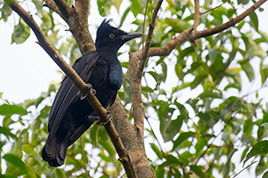



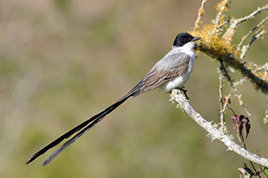
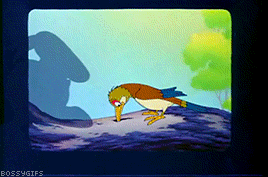
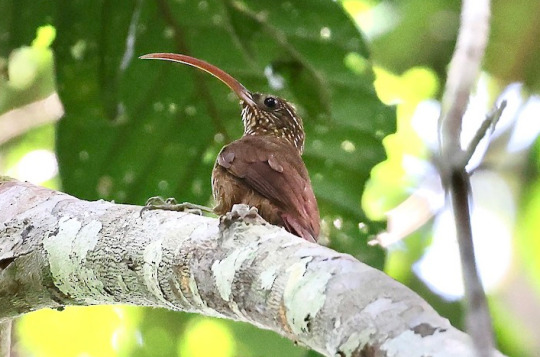
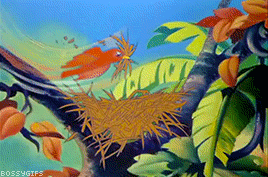

Disney's Aves Raras vs. the real thing:
Anambé-Preto: Amazonian Umbrellabird (Cephalopterus ornatus)
Arapapá: Boat-billed Heron (Cochlearius cochlearius)
Tijereta: Fork-tailed flycatcher (Tyrannus savana)
Arapaçu de bico curvo: Curve-billed Scythebill (Campylorhamphus procurvoides)
Marrequito (?): Yellow-chinned Spinetail (Certhiaxis cinnamomeus)
Photo credit:
Joao Quental / Macaulay Library
Luzate Amaral / WikiAves
Cláudio Dias Timm / Idaho Fish and Game
Anne Bielamowicz / Macaulay Library
Stephen Jay
#disney#the three caballeros#birds#photos#aves raras#comparisons#comparison#animation#animated#cartoon#gifs#animals#disneyedit#disney edit#disneygifs#filmedit#film edit#film gifs#filmgifs#movie gifs#movie edit
147 notes
·
View notes
Text

Tesourinha/Fork-tailed Flycatcher
Tyrannus savana
#asavesqueeuencontro#patricianicoloso#santa maria#rio grande do sul#brasil#brazil#birdlovers#fotografia#animals#photography#fotografias#fotos#photographer#photos#foto#photograph#birding#aves#ave#photo#passaros#passaro#animal#bird#birds#birds adored
22 notes
·
View notes
Text

Ended up using the American Black Swift, the Chimney Swift, the Scizzor-tailed Flycatcher, the Fork-Tailed Flycatcher, the Tree Swallow, and the Barn Swallow for references this time as it sounded like an insectivore that catches it's meals on the wing and nesting close to if not inside human buildings. I'm a sucker for pretty tails, thus the Flycatchers. Hands are still bugging me so I'm not getting into more detail with the behaviours mentioned this time.
10 notes
·
View notes
Text
okay, birds seen at home in june round up! comes to a total of 62 species, which is oddly high for the middle of winter. the highlight was the green twinspot, which i’d only got my first ever sighting of two weeks earlier. presumably it had only found its way to our garden because of the heavy rains and flash floods (and the tornado what the fuck) a few days prior - they’re forest birds, whereas our area is more broad-leaf woodland.
full list and photos under the cut!
bar-throated apalis, black-collared + crested + white-eared barbet, cape batis, dark-capped bulbul, green-backed camaroptera*, yellow-fronted canary, fork-tailed drongo, crowned eagle*, southern black flycatcher, african dusky flycatcher, african paradise flycatcher (odd for this time of year), egyptian goose, gymnogene, southern hadeda, purple-crested loerie. speckled mousebird, black-headed oriole, rose-ringed parakeet*, black-backed puffback, red-capped robin-chat, cape glossy + black-bellied + red-winged starling, collared + greater double-collared + olive + amethyst + white-bellied sunbird, olive + kurrichane thrush, golden-rumped tinkerbarbet, southern black tit, spectacled + village weaver, cape white-eye, cardinal + golden-tailed woodpecker, red-eyed + tambourine* dove, brown-hooded kingfisher, red-backed + bronze mannikin, klaas’s cuckoo*, lesser honeyguide, grey-headed bushshrike*, familiar chat, southern grey-headed sparrow, woolly-necked stork, sombre greenbul*, green woodhoopoe, cape wagtail, southern boubou, black sparrowhawk, african palm swift, green twinspot, black cuckooshrike?, black-headed heron, little sparrowhawk?, pied crow, african goshawk
* = call heard, no visuals, ? = i’m reasonably sure it was that, but not 100%

dark-capped bulbul, taken at a nature reserve up the hill
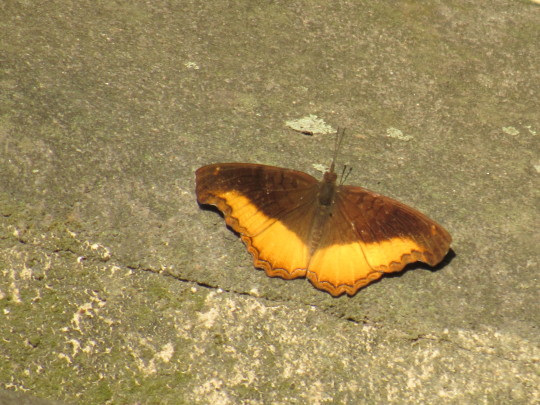
eurytela dryope

not sure yet. maybe a mocker swallowtail judging by the body?
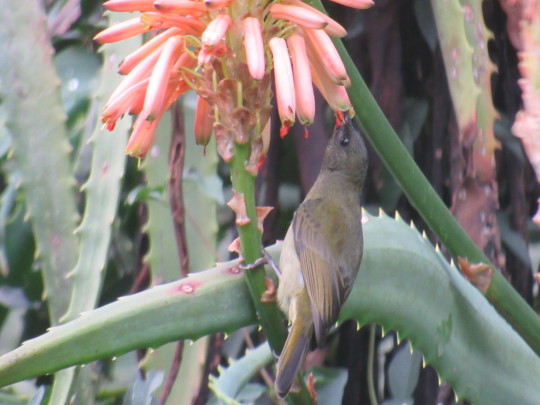
olive sunbird my beloved
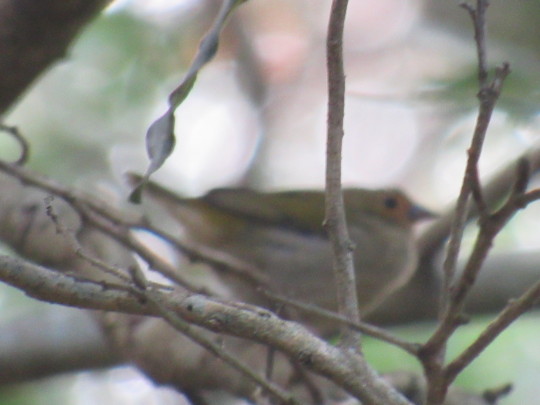
the green twinspot!! absolutely not a great photo, but i was surprised to get a pic at all tbh. either a female or juvenile

bosduival’s tree nymph

souther hadeda. chicken sized rats and the worst dawn chorus you’ve ever heard
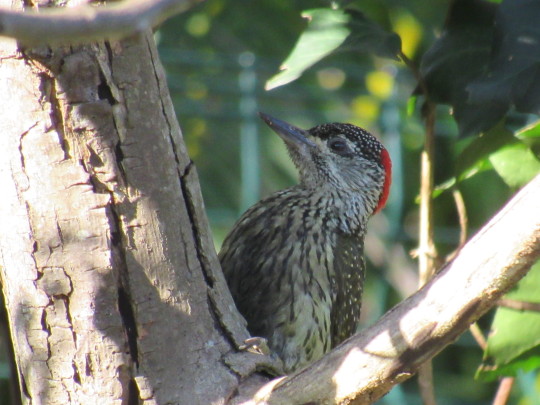
golden-tailed woodpecker
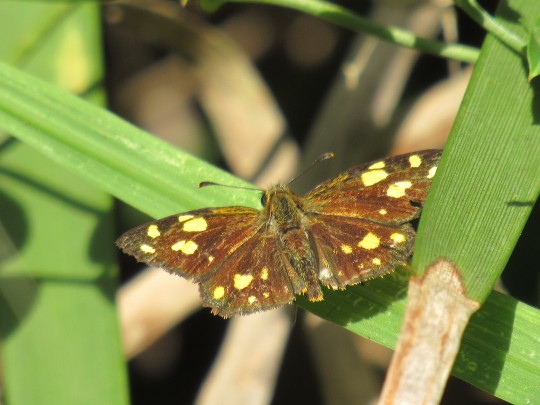
gold-spotted sylph. have never seen one before in my life, but it was hanging around the laundry
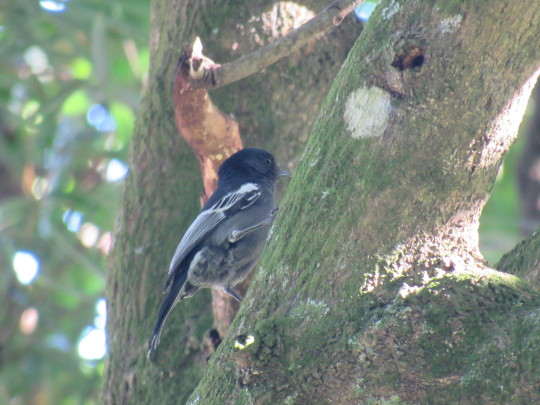
southern black tit!
#fieldnotes#birds#on birds#does tumblr have a birdwatching community tag#birding#birdwatching#bird watching
26 notes
·
View notes
Text
"You know, I've always hated the word paradise. I thought it was just stupid born-again-speak for dead. But now I'm having to rethink that, a little bit. Like that bird there--" "Our fork-tailed flycatcher." "It seems perfectly contented. I'm starting to think paradise isn't eternal contentment. It's more like there's something eternal about feeling contented. There's no such thing as eternal life, because you're never going to outrun time, but you can still escape time if you're contented, because then time doesn't matter. Does that make any sense?" "A lot of sense." "So I envy animals. Dogs, especially, because nothing smells bad to them."
- Jonathan Franzen, Purity
4 notes
·
View notes
Text





Cover art for the @shikashikacollective project A Guide to the Birdsong of Migration (kickstarter live now) featuring an album of music inspired by rare and vulnerable bird species. Album layout by @clau._.smith . Also some kickstarter rewards for various backer levels - tee shirt, poster, totebag.
#cerulean warbler#juan fernandez petrel#upland sandpiper#buff breasted sandpiper#rufous hummingbird#canada warbler#sandhill crane#swainsons hawk#red knot#fork tailed flycatcher
108 notes
·
View notes
Text
The ONE thing I will hand to summer is the immigration of fork-tailed flycatchers. They're a delight.
2 notes
·
View notes
Text
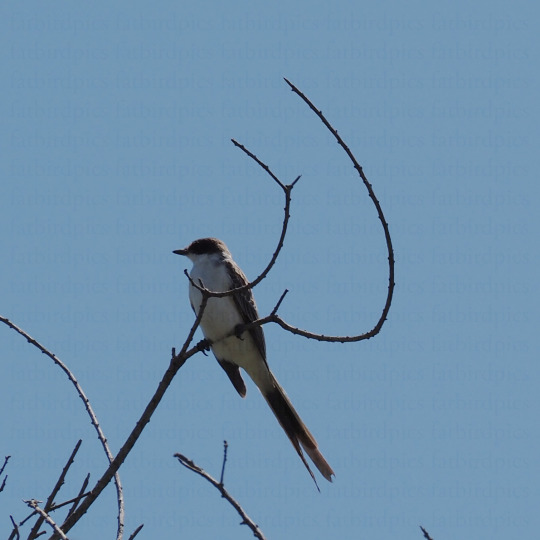
Fork-tailed flycatcher, Costanera Sur, Buenos Aires. Naturally I got it at the angle that least shows off the beautiful tail :')
6 notes
·
View notes
Video
Tesourinha - Fork-tailed Flycatcher por silene andrade
#sileneandrade#Tesourinha#Tyrannus savana#Fork-tailed Flycatcher#Tyrannidae#Passeriformes#Pássaro#Bird#Natureza#Nature#Parque da Cidade Dona Sarah Kubitschek#Nikon#Nikon COOLPIX P1000#2021#OUT OF THIS WORLD#flickr
12 notes
·
View notes
Text

Plate 168. Fork-Tailed Flycatcher by John James Audubon
0 notes
Text
gyatt
Okay so as my first ACTUAL post (as opposed to my intro), I am going to bird. I LOVE birds. The birbo… Birdy bird bird bird…


This, my good fellows, is a fork-tailed flycatcher. Adorable, innit? Giant ahh tail, too. Love.
The first image of the below pair is a male, and the second is a female.


THEY’RE SO CUTE…
Images retrieved from Wikipedia by the way. If there’s a copyright thing I wasn’t aware of, just let me know.
More information (and pictures ehehe):
(By the way, as a general note: I am going to be using Wikipedia in my bird posts a LOT. I love Wikipedia!)
1 note
·
View note

